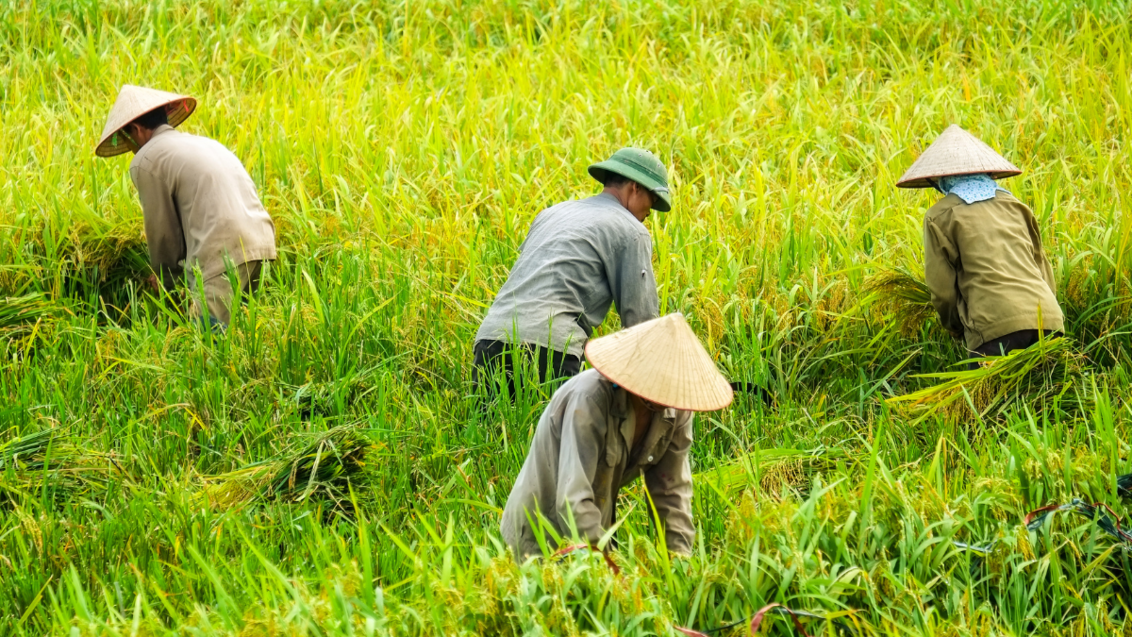Moving smallholder farmers higher up the climate change agenda

The plight and needs of smallholders – and the opportunities for supporting them
Low-income, especially pre-commercial, smallholders barely contribute to climate change. But they are among the worst impacted and are least able to address the consequences. Increasingly frequent weather extremes, biodiversity loss, and land degradation not only undermine farm productivity. They also put smallholders’ livelihoods at risk, as well as the food security of their communities and entire countries.
If we fail to address smallholders’ urgent need to deal with the consequences of climate change and become more resilient, we risk the collapse of agricultural systems that sustain huge populations. The world's smallholder farmers, about 510 million, with farms of up to 2 ha each, produce around a third of the world's food. If these farmers cannot cope with the consequences of climate change, the world may lose this productive capacity. That would have devastating effects on food security globally.
Despite this, the international community hasn’t been prioritizing smallholders in climate discussions. Of global climate financing commitments, only about 1.7% currently target these farmers. But COP27 reached a breakthrough in the right direction. Delegates from nearly 200 governments agreed to a “Loss and Damage” fund. This will help countries that are particularly vulnerable to the consequences of climate change. The creation of the fund is a milestone in the push by lower-income countries to get wealthier countries — whose economic growth gave rise to climate change — to compensate them for harm caused by increasingly extreme weather events.
However, as tends to happen with international agreements: the devil is in the detail. Several questions are yet to be answered. How much will be committed? Who will deposit contributions into the fund? Who can take money out, for what specific purposes, and how rapidly? We need to make sure that the new fund attracts meaningful financing and doesn’t get tied up in complex political and bureaucratic processes. Otherwise, those people most vulnerable and affected by extreme weather events (which they didn’t cause) won’t benefit fast enough.
Invest in mitigation, but even more importantly, help smallholders adapt to climate change
World leaders should recognize smallholders’ huge potential to contribute to climate mitigation. They are stewards of more than 70 percent of the world’s farmland. They can use it for environmental gains, for example through carbon sequestration techniques, agroforestry, or improving soil health. Regenerative agricultural solutions, including crop and farm diversification, not only lead to healthier soils. They can also increase smallholders’ incomes and help buffer them against price fluctuations for individual crops.
Soils have the capacity to hold twice as much carbon as is present in our atmosphere. Appropriate sequestration practices could remove as much as 5.5 billion tons of carbon dioxide per year from the atmosphere (Carbon Brief, 2020). That represents about half of the global emissions caused by agriculture, forestry, and related land use. Working with smallholders on minimum- or no-till, rotations including cover crops and agroforestry, as well as water use-efficiency, could enable their soils to become carbon sinks and help lead agriculture towards ‘net zero’.
Mitigation is important – but focusing on it alone risks keeping smallholder farmers poor and vulnerable. We urgently need more money to help hundreds of millions of smallholders adapt to the changing climate and equip them with the tools to withstand its impact. Public investment isn’t enough; the private sector must also be part of the solution. Adaptation offers a vital commercial opportunity, yet leading private sector players still hesitate to invest in products and services that could help most smallholders adapt.
Numerous innovative technologies can help make farming more profitable, efficient, and environmentally friendly. ‘Climate-smart’ crops that can better withstand weather extremes are notable examples. Others include a wider range of digital tools, including those that can advise farmers and others on the most resource-efficient ways to increase soil health. These tools enable e-commerce, as well as high-precision use of irrigation, mechanization, and inputs.
Policymakers must set the right incentives and ensure that innovations reach smallholders quickly and unbureaucratically. Most importantly, if companies and the public sector do increase climate adaptation financing for smallholders, it must be able to reach these farmers. Our partners and we have proved that expanding entrepreneurial ‘first-mile’ networks for smallholders is one way to help them benefit from innovations at scale.
Provide a safety net to farmers
Climate-smart, resilient agriculture technologies and techniques are very important. However, they do not fully protect farmers from crop devastation caused by increasingly severe droughts, floods, pests, disease, or dwindling groundwater. Farm and crop insurance helps here. It enables smallholders, for example, to plant again the following season even if their crops fail this time round. Suitable insurance, especially affordable and reliable index-based solutions, encourages smallholders to invest more in their farms. They can thus increase productivity and diversify, even when the climate is unpredictable.
Our Foundation has extensive experience in developing innovative and affordable insurance for smallholders. This protection enables them to invest confidently in quality inputs, get access to credit and increase their productivity, incomes, and resilience. Our focus to date has been on East Africa, Bangladesh, Indonesia, Cambodia, and Sudan. Unfortunately, millions of smallholders worldwide lack this safety net, making them particularly vulnerable. There is a lot still to do!

